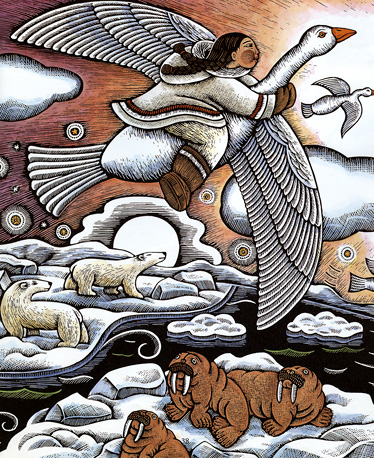Reviews for The Barefoot Book of Earth Poems
(formerly The Sun in Me — Poems About the Planet)
School Library Journal, March 2003
Nicholls shows herself to be a master anthologist, joining the likes of X.J. Kennedy or Lee Bennett Hopkins, in her choice of poems that are both wonderful and accessible to children. The selections range over time and cultures, but each one shines in its crisp vision of the natural world. A Czech poet describes winter: "In the night,/Came a white horse to visit,/His hooves made no sound/As he covered the ground,/And snow filled the land with its spirit." Krommes's extraordinary scratchboard-and-watercolor illustrations extend the mood of each poem. A book to warm the soul of any poetry lover.
Kathleen Whalin, York Public library, ME
Publishers Weekly, March 2003
Nature's wonders unfold in The Sun in Me: Poems About the Planet, edited by Judith Nicholls, illustrated by Beth Krommes. The anthology presents 29 works by poets from various times and places including Sappho, Emily Dickinson, and John Updike. Created first on scratchboard, then photocopied and brushed with watercolors, Krommes's art fairly bursts from the pages.
Kirkus, Feb. 2003
A wide-ranging poetry collection covers sea, sun, sky, and earth illuminated by stunning illustrations. Nicholls has ranged far in her choice or poets, too, choosing John Updike, and Charlotte Zolotow along with Issa and Buson. There's a traditional Albanian riddle and a handful of translations. Most of the poems are quite short and none are longer than a page. Readers will find Emily Dickinson on snow and The Juggler of Day; there is Rabindranath Tagore in an excerpt from Stray Birds. Sappho's "Evening Star! You bring back/All that the bright dawn scattered" faces a Pasamaquoddy Indian song: "We are the stars which sing./We sing with our light." The illustrations are gorgeous--Krommes (The Lamp, the Ice, and the Boat Called Fish, 2001, etc.) sketches her images on scratchboard, photocopies the result, then fills in the copies with watercolor. The result is a brilliant use of pattern and placement in space along with color that leaps from the page. The pictures are full of the flora and fauna of the natural world, but almost every scene also has a person, so readers and listeners can see their place in the sun. An unnecessary introduction is a bit overlong--these poems speak for themselves and their message is clear: we are indeed of the earth.

